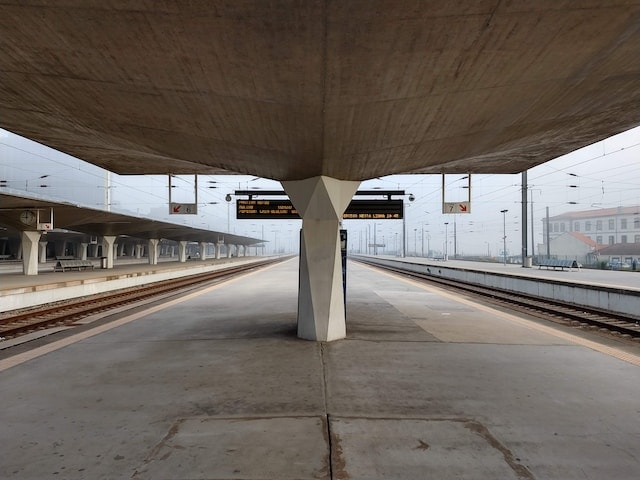Embarking on a river cruise on the Douro? Then your ship’s most likely welcoming you in Porto as your port for embarkation (and disembarkation). For travelers from the United States or Canada, flying into Porto isn’t quite as easy as it is for travelers from or already in Europe as Lisbon is the main airport for Portugal for overseas arrivals.
What’s the closest airport to the Douro?
If you’re connecting in Europe, there’s a good chance your carrier may offer a flight into Porto OPO and therefore that’s our recommendation for convenience. While it’s surely possible to take a train between Lisbon and Porto, it’s not a direct nor guaranteed fast way — from LIS airport to Porto port. Especially travelers with lots of luggage or limited mobility may find arriving in Lisbon and having to make their way to Porto (or vice versa) stressful and challenging. Keep in mind that flights may also be delayed or train service could be disrupted or limited for a variety of reasons.
Porto, airport code OPO also known as Francisco Sá Carneiro Airport is the closest airport to (y)our ship. Flights from the US to Europe are usually overnight flights, so we recommend to leave at least one day before embarkation. Return flights can be on the day of disembarkation as most likely, your Douro river cruise is already docked in Porto the night before your departure. The port is easily reached by taxi or rideshare services.
Can I fly into Lisbon and make my own way to Porto?
You sure can — there’s plenty of ways: by rental car, public bus, with a car service or by train.
Keep in mind the distance between the two cities is over 200 miles (330 kilometers).
It’s important to note that there is no immediate connection from Lisbon airport to the train stations and also not all trains are high-speed like the Alfa Pendular which takes 2.5 hours. Here’s a more detailed explanation.
To travel from Lisbon Airport to Porto by train, you’ll first need to get to Estação Ferroviária de Lisboa Oriente, which is the main train station in Lisbon. From the airport, you can take public transportation or a taxi to reach this station. Once at Oriente station, you can board a train to Porto.
The train service between Lisbon and Porto is operated by Comboios De Portugal, the Portuguese national railway company. They offer several types of trains, including high-speed “Alfa Pendular” trains and intercity trains. The high-speed train is the fastest option, taking between 2 hours and 49 minutes to 2 hours and 56 minutes to reach Porto. The intercity trains take slightly longer, about 3 hours and 15 minutes. There are also regional trains available, but they take the longest, around 5 hours.
In terms of cost, the high-speed “Alfa Pendular” train costs about €45 for First Class and €32 for Second Class. However, if you book early, you can find tickets for as low as €27 in First Class or €20 in Second Class. The intercity train is a bit cheaper, and for the IC early booking can reduce these prices further. The standard fare for the regional train is the cheapest, at around €19.
Keep in mind that train prices vary, and it’s always a good idea to book your tickets in advance to get the best deal and ensure availability, especially during peak travel times. Pay attention to fine print when it comes to ticket usage and Don’t forget that these trains are not designed for travelers with big, checked bags and storage is very limited.
Upon arrival in Porto, the main train station is Porto Campanhã. From there, you can take public transportation or a taxi to reach the port area of Porto.
For more detailed information and to book tickets, you can visit the Comboios De Portugal website.
Must-see Portuguese Train Stations
In Portugal, two train stations stand out not just as transit points but as masterpieces of art and history: Lisbon’s Rossio and Porto’s São Bento. These aren’t mere stops on a journey; they’re destinations in their own right.
Rossio Station, nestled in the heart of Lisbon, is an architectural marvel. Its façade is a nod to the romanticism of the Manueline era, a style unique to Portugal, conjuring images of explorers setting sail for unknown lands. Step inside, and you’re greeted by a symphony of bustling energy that’s quintessentially Lisbon.
Then there’s Porto’s São Bento, a true jewel in the crown of Portuguese architecture. As you enter, you’re enveloped by walls adorned with over 20,000 azulejo tiles, each telling a story of Portugal’s rich history. It’s a visual feast, a place where time stands still, and every glance reveals a new layer of Portugal’s past.
It’s important to nice that neither of these two train stations are the main ones in Lisbon nor Porto.
Long-Distance Train Stations in Lisbon and Porto
For long-distance travel between Lisbon and Porto, you’ll want to depart from Estação Ferroviária de Lisboa Oriente, which is the main train station in Lisbon and in Porto the main train station is Porto Campanhã. Both are more modern than Rossio and São Bento, but still not the epitome of accessibility nor convenience. Elevators and escalators are often scarce, sometimes broken and the rush of daily commuters can add to the disorientation.

Photo by Tim van der Kuip on Unsplash


Photo by Lívia Calsavara on Unsplash
To summarize, while we love taking the trains (especially for day trips) and recommend using public transportation whenever possible, doing so when traveling between Lisbon and Portugal can be more difficult, time consuming and also stressful for travelers than you may think. At the time of writing this article, when checking the official Portuguese train travel to include as a reference, an alert of disruption on the next day popped up.
